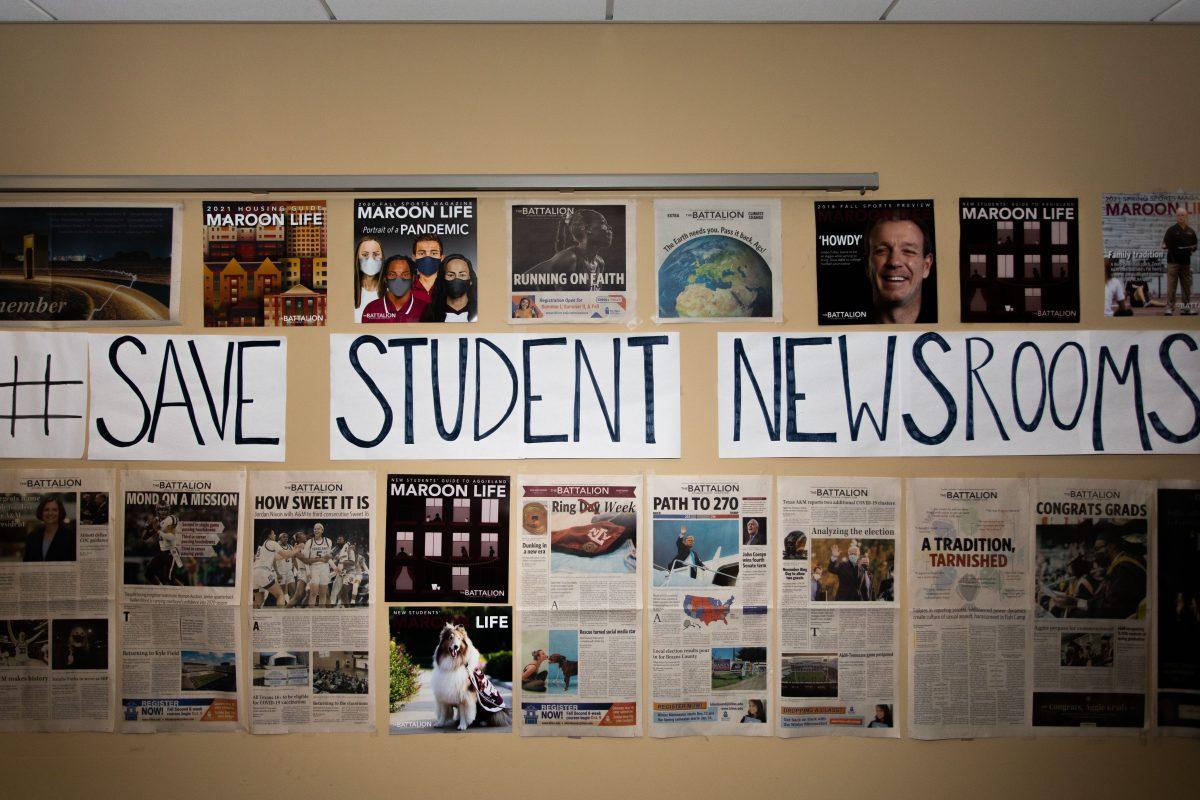Students up late studying, texting or watching Netflix may notice a change in their sleep patterns, said David Earnest, professor in the department of neuroscience and experimental therapeutics at Texas A&M Health Science Center and faculty member of the interdisciplinary program in neuroscience at A&M.
Earnest said exposure to blue light emitted from electronics has the greatest potential to affect one’s circadian clock, or 24-hour sleep cycle.
“Blue light is on the end of the light spectrum that has the most dramatic impact on the human circadian rhythm because it shifts rhythms delaying processes such as sleeping and eating,” Earnest said.
Earnest said circadian rhythms are controlled by the body’s internal clocks, which are located throughout the body in virtually every cell.
“Each individual cell can function as a 24-hour clock — keeping time and various processes in order so that they occur at the right time of the day in relation to the environment and to each other,” Earnest said.
The 24-hour rhythm that people are most familiar with is the sleep and wake cycle, Earnest said. There are two main mechanisms in the body that govern this cycle — the circadian clock and the homeostat mechanism.
“The circadian clock tells us when and what time of day we need to go to sleep and regulates this cycle on a 24-hour basis while the homeostat acts as a thermostat in the body keeping sleep phase at a certain fixed temperature, allowing for a certain time length of sleep,” Earnest said.
While a person theoretically receives eight hours of sleep per night, a simple disruption of the cycle can alter when and how many hours of sleep a person gets, Earnest said.
Earnest said the body can catch up to a two-hour shift at most, but anything more makes it increasingly difficult for the body to adapt.
While almost each of the body’s cells has its own circadian clock, each cell is controlled by the “masterclock” located in the brain. This clock is what ultimately governs one’s sleeping and eating schedules, Earnest said
“Blue light affects the masterclock by entering through the eyes,” Earnest said. “From there, the light travels to the masterclock in the brain, causing it to shift, thus altering our circadian clock.”
Earnest said that any amount of time spent being exposed to blue light could have an affect on the circadian clock.
Among those who use electronics late at night, students — high school and college — are two of the most frequent users.
Alanna Jajeh, a student in the Gateway program, said she often spends up to two hours before she sleeps at night on her cell phone or laptop or watching tv to wind down. She said she also spends time switching back and forth between social media sites like Instagram and Facebook.
“I sleep ok, when I do that.” Jajeh said. “If I don’t, then I feel like I haven’t completed my routine.”
Earnest said mobile circadian rhythm apps are becoming increasingly popular and are helpful tools.
“It’s made to keep one in ideal syncrony with the environment, organizing a strong sense of regularity day-to-day,” Earnest said.
Jajeh said she reguraly uses a Jawbone wristband — wearable technology that tracks levels of physical activity, nutrition and importantly, sleep patterns.
“It lets me know how well I sleep,” Jajeh said. “It’s important to give your body the proper rest it needs, and this tracker is very accurate in measuring deep sleep.”
Even with all the technology designed to help minimize the effects of blue light exposure, nothing is more helpful than simple awareness, Earnest said.
“Just simply being aware of how often you use your phone or the computer is tremendous in minimizing the effects of blue light exposure on the circadian clock,” Earnest said.
Prof studies electronics’ impact on sleep cycle
July 27, 2014
0
Donate to The Battalion
$0
$5000
Contributed
Our Goal
Your donation will support the student journalists of Texas A&M University - College Station. Your contribution will allow us to purchase equipment and cover our annual website hosting costs, in addition to paying freelance staffers for their work, travel costs for coverage and more!
More to Discover









